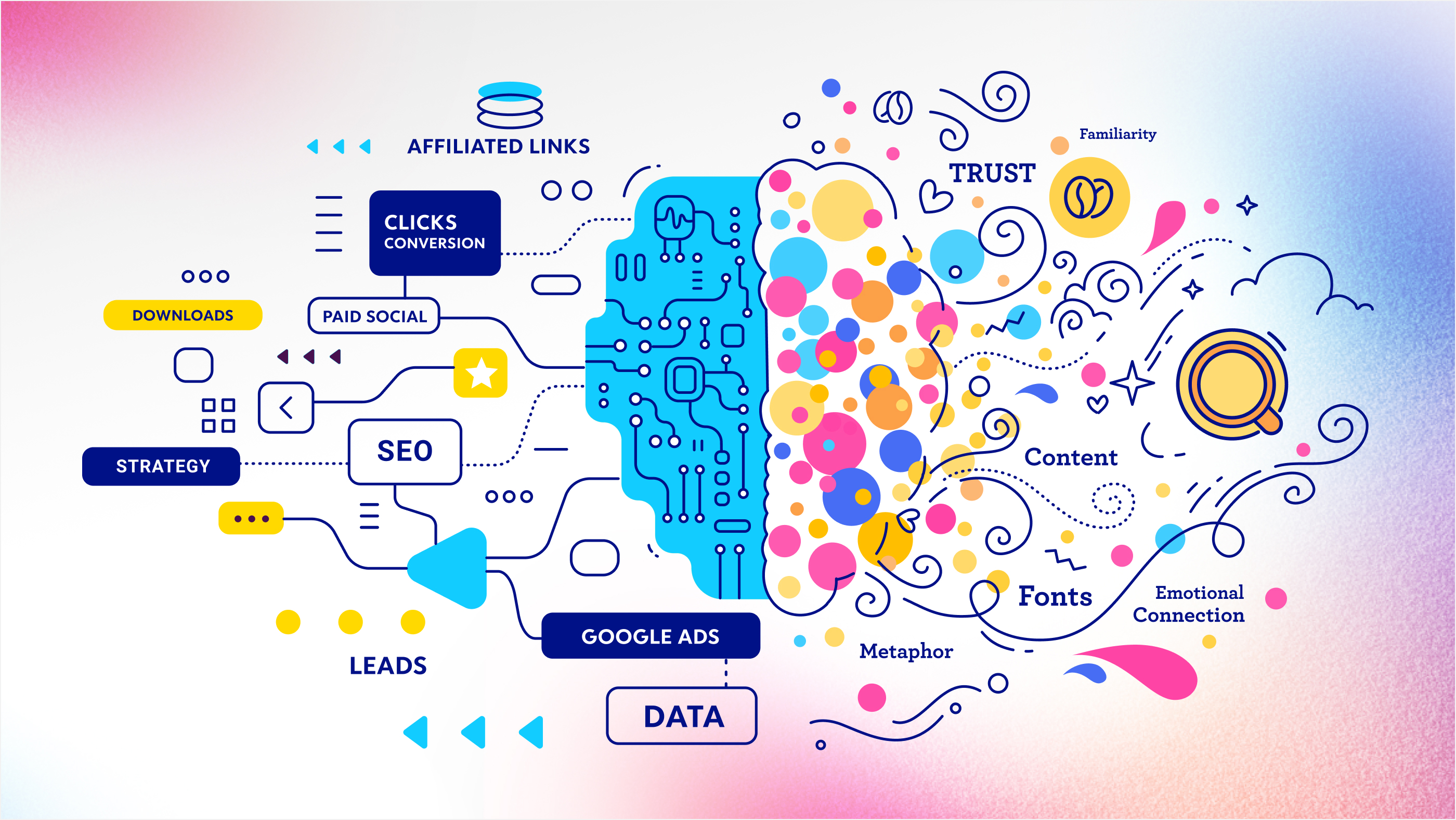There’s a good chance your marketing team has had a spirited debate, possibly over beers or flat whites – about where the budget should go: performance marketing or brand marketing. One promises cold, hard ROI. The other? Vibes. But here's the thing: in 2025, that old-school binary thinking isn’t just tired, it's holding you back.
Let’s unpack why both performance and brand marketing are essential for your business in New Zealand - and how they can work together like pineapple and chocolate. (Okay, not everyone’s favourite combo, but you get the point.)
What is Performance Marketing?
Performance marketing is the nerdy overachiever of the marketing world. It’s all about the data. Every dollar spent must lead to something measurable – clicks, conversions, leads, app downloads, newsletter signups, you name it. Think Google Ads, paid social, affiliate links, and EDMs with suspiciously good subject lines.
In short, performance marketing delivers results you can take to the CFO and say, “See? Told you it was working.”
What is Brand Marketing?
Brand marketing, on the other hand, is the dreamy art student who speaks in metaphors and cares deeply about fonts. It’s long-term. Strategic. Big-picture. Brand marketing builds familiarity, trust and an emotional connection with your audience. It’s the stuff that makes someone say, “I just like them” before they’ve even clicked a single ad.
TV commercials, sponsorships, organic social media, podcasts, storytelling content – all these fall under the brand marketing umbrella. They rarely produce immediate results, but they lay the foundation for future performance wins.
The False Dichotomy: Why the Either/Or Mentality Doesn’t Work
Here’s the trap many businesses fall into: they pick a side. Start-ups often lean hard into performance marketing because they need fast results. Fair enough. On the other end, heritage brands sometimes rest on their reputation and pump money into brand campaigns, assuming the sales will roll in eventually.
The truth? Choosing one over the other is like deciding whether your car needs an engine or wheels. (Spoiler: it needs both.)
Performance marketing without brand support eventually dries up. Costs per click go up, and customer loyalty is practically non-existent. You’re forever chasing the next lead, with no compounding benefit.
Brand marketing without performance support? That’s the equivalent of shouting into the void. You might have a beautifully crafted narrative, a logo to die for, and a killer origin story, but if no one’s seeing it – or taking action – you’re wasting time and money.
The Flywheel Effect: When Brand and Performance Work Together
Here’s where the magic happens. When brand and performance work hand-in-hand, they fuel each other in a flywheel effect.
Say your brand marketing campaign introduces your company to a new audience. Maybe it’s a clever outdoor ad in Auckland or a heartfelt story shared on Instagram. It sparks interest. People start searching your name. That’s when performance marketing steps in - capturing search queries, re-targeting site visitors, and nudging warm leads to convert.
At the same time, those performance ads don’t operate in a vacuum. If they’re backed by a strong, consistent brand identity, they resonate more. A consumer who recognises your tone, values, and visual aesthetic is more likely to click, more likely to trust, and more likely to buy.
Measurement: The Eternal Struggle
Let’s be honest, measurement is where things get murky. Performance marketing is addicted to numbers. Brand marketing? Not so much.
But while brand marketing doesn’t give you instant gratification, it does leave a trail. You can track metrics like brand lift, share of voice, and net promoter score (NPS). You can run brand tracking surveys, monitor organic search volume, or assess social media sentiment. It’s not as neat as a click-through rate, but it’s no less important.
Savvy marketers use multi-touch attribution models or marketing mix modelling (MMM) to understand how brand and performance contribute to revenue. And no, it’s not witchcraft – it’s just data science and a bit of patience.
The New Zealand Context: Small Market, Big Opportunity
In New Zealand, our market is compact. That means brand reputation spreads quickly good or bad. Kiwis value authenticity and trust. We want to know who we’re buying from, not just what they’re selling.
That makes brand marketing especially powerful here. At the same time, because budgets are tighter and competition (including from offshore) is fierce, performance marketing gives businesses the ability to be agile, efficient, and test-and-learn their way to growth.
Your brand story can’t just live in a fancy case study or slick video – it needs to be part of your retargeting ads, your email sequences, even your meta descriptions. Likewise, your high-performing paid campaigns shouldn’t feel like faceless sales pitches – they should ooze personality and align with your broader brand narrative.
Final Word: Integration Is the New Differentiation
The best marketing strategies in 2025 are integrated. That doesn’t mean you throw money at both channels and hope for the best. It means you treat your brand as an asset and performance as the engine that mobilises it.
Brand marketing sets the stage; performance marketing closes the deal. It’s less “versus” and more “dance partners.”
So next time someone in your team says, “Should we focus on brand or performance this quarter?” reply with: “Yes.” Then take a sip of your flat white, smile, and plot the beautifully integrated marketing strategy your future customers, and your CFO, will thank you for.

